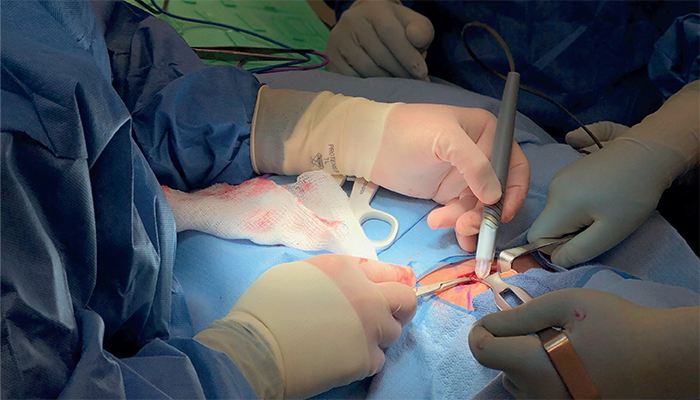No eraser needed. Distinguishing between thyroid, parathyroid, and lymph node tissue during surgery can be very challenging, due to their localization and physiological similarity. With this in mind, the medical mass spec team from Texas assessed the performance of their MasSpec Pen during endocrine surgery. The study demonstrated the pen’s ability to distinguish between and identify tissues with more than 90 percent accuracy. Analyzing the sample in real time with this device enabled instant feedback on its pathology, aiding surgical decision making and decreasing procedure time and costs. “We think this can really revolutionize how we do surgery,” said James Suliburk, corresponding author in the press release.
Where the wild things are. The growing demand for wild salmon – along with the higher price tag – has led to instances of food fraud, where farmed salmon is sold as wild salmon. It can be nearly impossible to differentiate between the two once they’ve been processed. This led an international team of researchers to develop a method – which combines matrix-assisted laser desorption ionization-time of flight mass spectrometry (MALDI-ToF MS) and chemometric analysis – to differentiate between wild and farmed salmon. The researchers achieved 100 percent classification accuracy.

Spinal tag. A newly-developed fluorescent technology can tag lipoprotein subspecies in small volumes of human cerebrospinal fluid and could be used by clinicians to learn more about what’s happening in Alzheimer’s disease. The researchers engineered an ultrasensitive fluorescent detector into a high-resolution SEC system, which they combined with liquid chromatography-tandem mass spectrometry (LC-MS/MS)-based proteomics. The mass spec analysis identified 303 proteins across the populations, over half of which have not been reported in plasma high-density lipoproteins. Now, the team is keen to collaborate with clinicians. "There are existing cerebrospinal fluid samples sitting in freezers, and we have a new way to analyze them,” said co-author John Melchior in a press release.
The forever problem. As previous studies have shown that prenatal exposure to per- and polyfluoroalkyl substances (PFAS) is inevitable, there are increasing concerns regarding the impact of these “forever chemicals” on newborns. Researchers from the Yale School of Public Health, USA, coupled a high-resolution orbitrap mass spectrometer to an ultra-high-performance liquid chromatography system to study the relation between thyroid hormone levels (crucial for normal growth and development) and PFAS concentrations after birth from dried blood stain samples. They found some “exploratory, potential relationships” between thyroid hormones and PFAS exposure. “These findings should be examined in a larger cohort with a broader range of thyroid hormone measurements to more thoroughly describe potential patterns of association,” concluded the authors in their pilot study.
Julia Laskin and colleagues develop an integrated microfluidic probe for mass spec imaging of biological tissues – with both high spatial resolution and high throughput. Link
Tandem-MS-based metabolomic analysis demonstrates significant correlation between metabolism of arginine, methionine, and tryptophan, and inflammatory cytokine release and insulin resistance in HIV/AIDS patients. Link
Antarctic research stations are contaminating Antarctica’s marine waters, which contain high amounts of metals (lead, copper, zinc, tin, cadmium), hydrocarbons (TPH) and PBDEs, according to GC-MS/MS analysis. Link
Silver-109 and gold nanoparticles improve the performance of high-resolution laser desorption/ionization mass spectrometry (LDI-MS) and mass spectrometry imaging (MSI) of steroid hormones. Link
Researchers use mass spec to identify the presence of Spike protein fragments in 50 percent of samples derived from patients immunized with mRNA-based vaccines against SARS-CoV-2, between 69-187 days post vaccination. Link
Alkaline liquid-liquid extraction (LLE) and liquid chromatography-time-of-flight mass spectrometry (LC-QTOF-MS) used for targeted screening of synthetic cannabinoids and opioids in whole blood. Link
Alemayehu Godana Birhanu reviews the new paradigms MS-based clinical proteomics has created in microbiology, oncology, and diagnosis of metabolic disorders – and points to a need for automation, machine learning algorithms, and software packages. Link
For the latest mass spec research delivered to your inbox every week, sign up to the Mass Spec Newsletter here.




